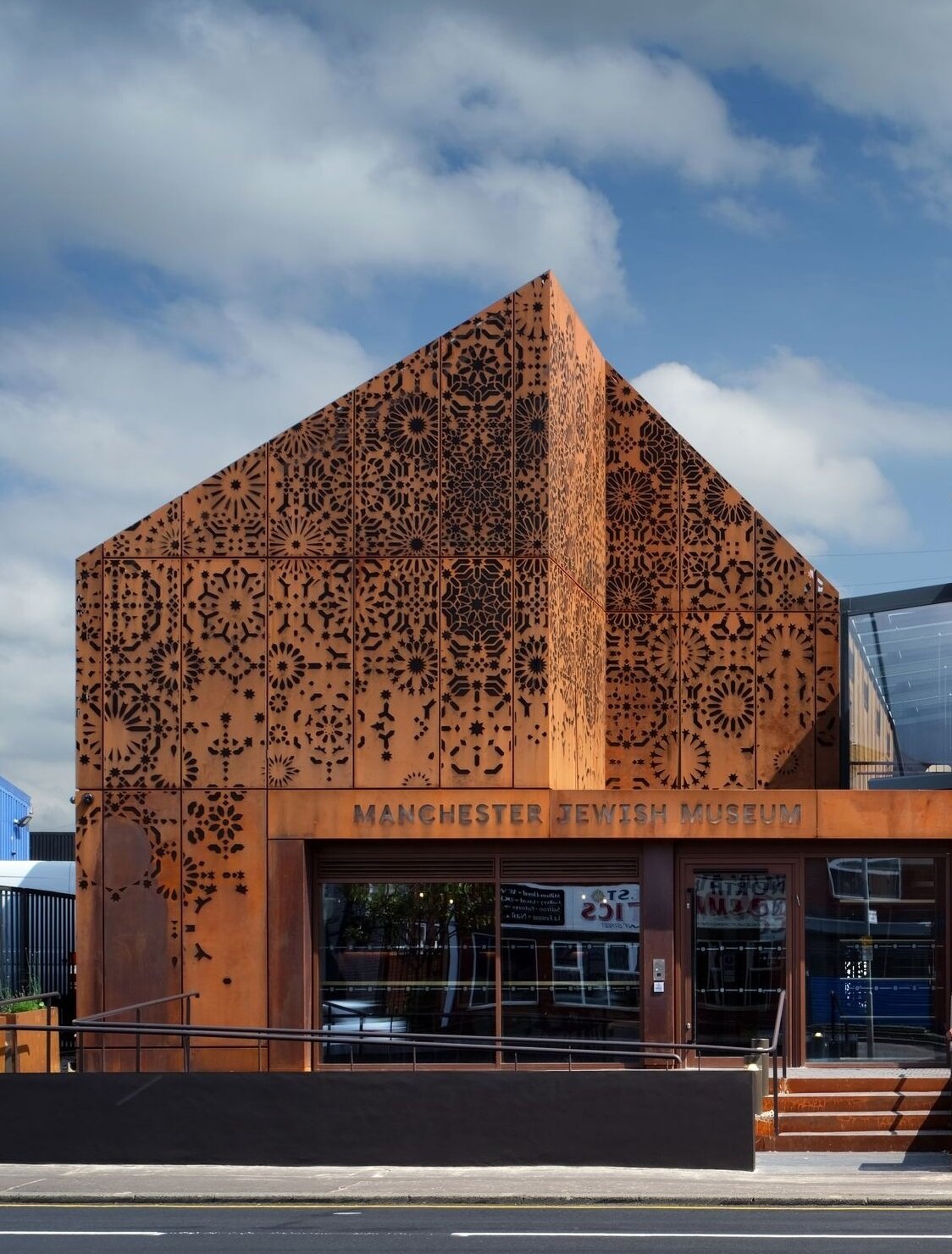#16818. The Perforated Facade of Manchester Jewish Museum: Traditions in Contemporary Interpretation

The Manchester Jewish Museum building is a magnificent example of contemporary architecture where traditional motifs meet innovative solutions. The facade is striking with its unique weathering (Corten) steel cladding, which gives the building both warmth and industrial character.
Of particular note is the intricate perforated pattern on the facade, inspired by Jewish and Middle Eastern ornamental motifs. These geometric patterns create not only visual interest but also a functional element—they filter light, creating an amazing play of shadows inside the building. Such perforated facade design is an excellent example of how architectural details can simultaneously serve aesthetic and cultural purposes.
The building's form is laconic—a simple geometric structure with a gabled roof reminiscent of a traditional dwelling but reimagined in a contemporary way. This contrast between the simplicity of form and the complexity of pattern creates a powerful visual effect. The lower level of the facade is executed in a more restrained manner, with large glass surfaces providing transparency and inviting visitors inside.
For private home construction, this approach to facade treatment can be adapted in the form of perforated panels or screens on select parts of the house, creating accent zones and filtering natural light. The use of materials with patina or pronounced texture will add individuality and character to any building.